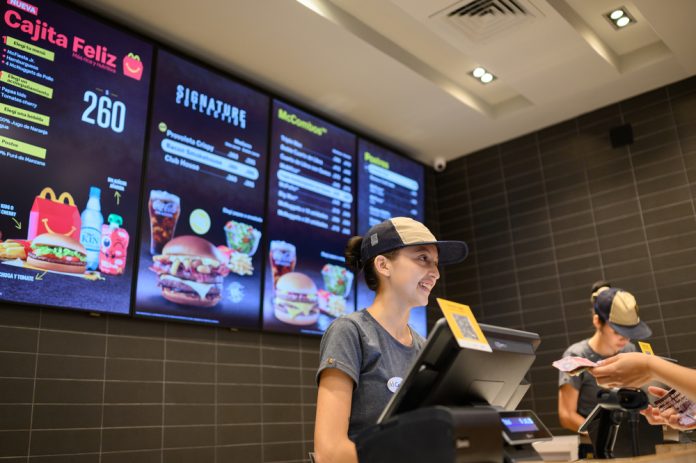
Employee engagement and retention are perhaps the biggest challenges for any company. We know when a team member is more engaged, they’re more productive and loyal to the company in the long term. As the workforce changes geographically and generationally, we need innovative ways to achieve engagement goals. The solution just might be investing in a new kind of leadership training.
Employee Engagement and Retention Amid a Changing Workforce
As we navigate remote work environments, the engagement puzzle gets more complex. With fewer in-person interactions and a workforce spread across time zones, developing the relationships that foster engagement is no easy task.
In the case of Seven Corners travel insurance and specialty benefit management company, transitioning to a flexible workplace lets team members work wherever is best for their productivity. Engagement historically has been high, and as recently as early 2022, the company earned a “Highly Engaged” score on the 15Five (Emplify) employee engagement survey.
Upon joining the company, Director of People and Culture Ed MacDonald made having one-on-one conversations with every team member one of his first tasks. Feedback was generally positive, but MacDonald wanted to dig deeper. “When I started pressing people, about half of them said, ‘We want to see more learning and development opportunities.’”
A new question emerged: How do we serve professional development opportunities for all team members, regardless of their rank on the organizational chart?
A New Kind of Leadership Training
Traditional leadership training for management-level employees will always have value, but most are not in official leadership positions. Rather than limiting growth opportunities, Seven Corners partnered with ADVISA to customize the Emerging Leaders Program (ELP), which works with team members to help them become stronger individual contributors in their current positions.
“I feel very strongly that everyone—from upper management to new hires—should be equally represented at the company,” MacDonald says. “Many people come in and are happy doing their day-to-day job. Other people want to advance. They want to learn more. So we identified these people for the Emerging Leaders Program.”
The ELP is tasked with helping employees develop tools to better self-manage and be more effective in their teams. Remote employees outside the Indianapolis area travel to the office for monthly in-person workshops.
According to MacDonald, the goal is to give team members a chance to work together and develop cross-functional thinking to better understand the company and who they work with. If that goal is met, increased motivation and engagement will follow.
Skill-Building Investment Leads to Higher Engagement
After the first cohort, the benefits of investing in individual contributors are clear.
“For me, it was more about confidence in decision-making in the workplace and how to meet issues as they arise,” says Shannon Sibbesen, digital designer for Seven Corners, who completed the program in September. “I feel like I have a lot more confidence in design decisions I’m making now and how I can help and support the team and how to better engage with other team members. Before, I felt kind of siloed.”
Sibbesen also learned valuable lessons for identifying what she can and cannot control. For Sibbesen, identifying parts of a company process where she can make an impact as a digital marketing team member—and learning when to step back and let others take the lead—alleviates stress and helps her be more efficient with her efforts.
The ELP isn’t just about the individual’s improvement. The company also benefits from having an employee who feels more invested in the company.
Most of Seven Corners’ employees live in the Indianapolis area. Sibbesen, however, is based out of Baltimore, meaning she rarely has in-person interactions with teammates. Lessons on mindful communication—active listening, asking confirming questions, and body language—are already impacting her effectiveness in virtual meetings, but by coming to the corporate office for the program, she also gained valuable face-to-face time with colleagues.
“Getting to work with team members I wouldn’t usually work with really made me realize I’m operating off a small amount of information,” Sibbesen notes. “Meeting in person and getting to hear from the other departments really made me feel a lot less like, ‘All this is only happening to me.’ And I think we all felt that way.”
Ultimately, MacDonald and the company’s executive team received overwhelmingly positive feedback.
“Everybody loved the learning,” MacDonald says. “Many people mentioned how it also was helping them deal with issues in their personal life. One of the topics we got a lot of good feedback on was how best to deal with conflict. Everybody thinks of conflict as a bad thing, but if no one’s raising their hand saying there’s a problem, they’re just saying, ‘Forget it.’ Conflict can be good because you have people who care about the organization, their group, and their performance.”
The Next Wave of Engaged Leaders
Providing employees at all levels with the skills they need to self-manage, particularly with remote work, can be a powerful engagement tool. The Emerging Leadership Program was ideal for Sibbesen, who says she’s not ready for a people-managing position and prefers managing projects and processes. “For me, it’s more management of self and tools and how I operate in the team right now.”
MacDonald says the company plans to run a new ELP cohort each year. There are also plans to administer the Predictive Index, a type of personality test used in the program, more broadly next year.
The biggest takeaways for MacDonald are that the program works and can work for any company. The ELP not only got people in the same room again but also created meaningful interactions for learning about each other. Plus, “It’s not just for optics,” MacDonald says. “It’s showing people that you do care about them and their development.”




